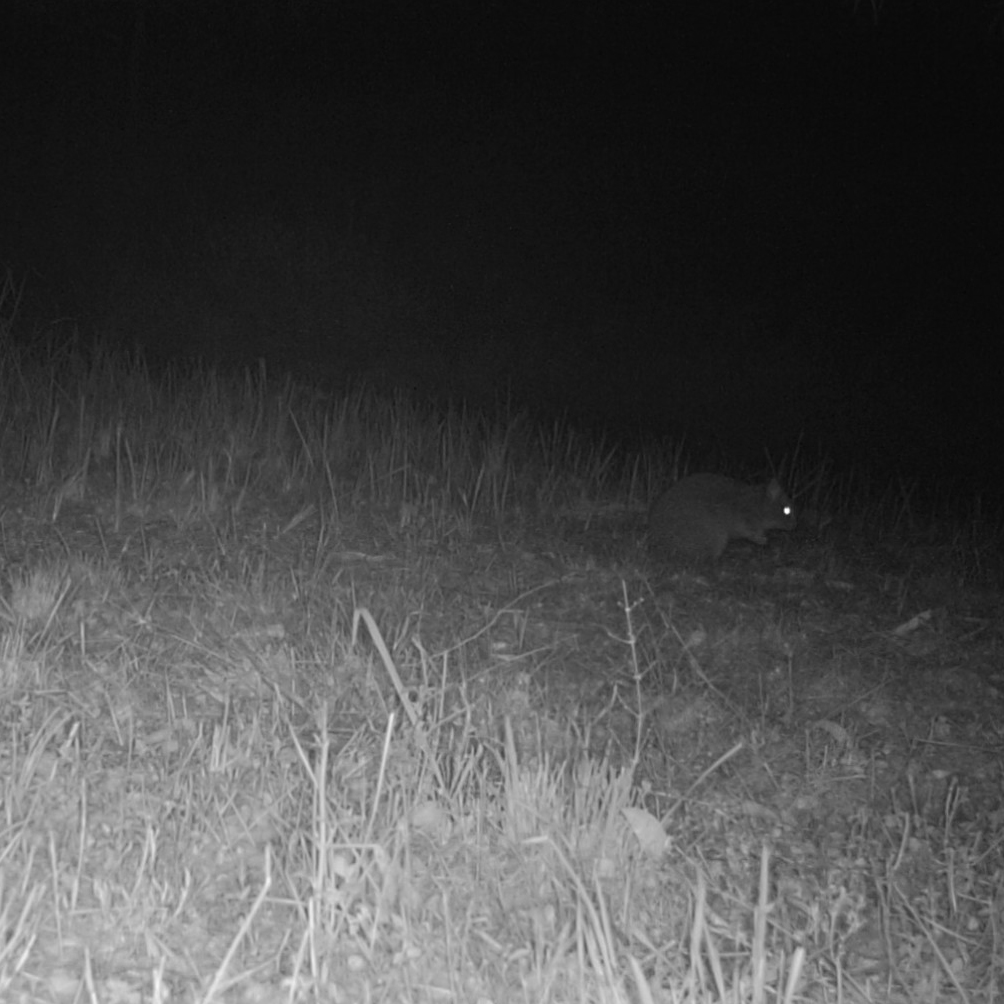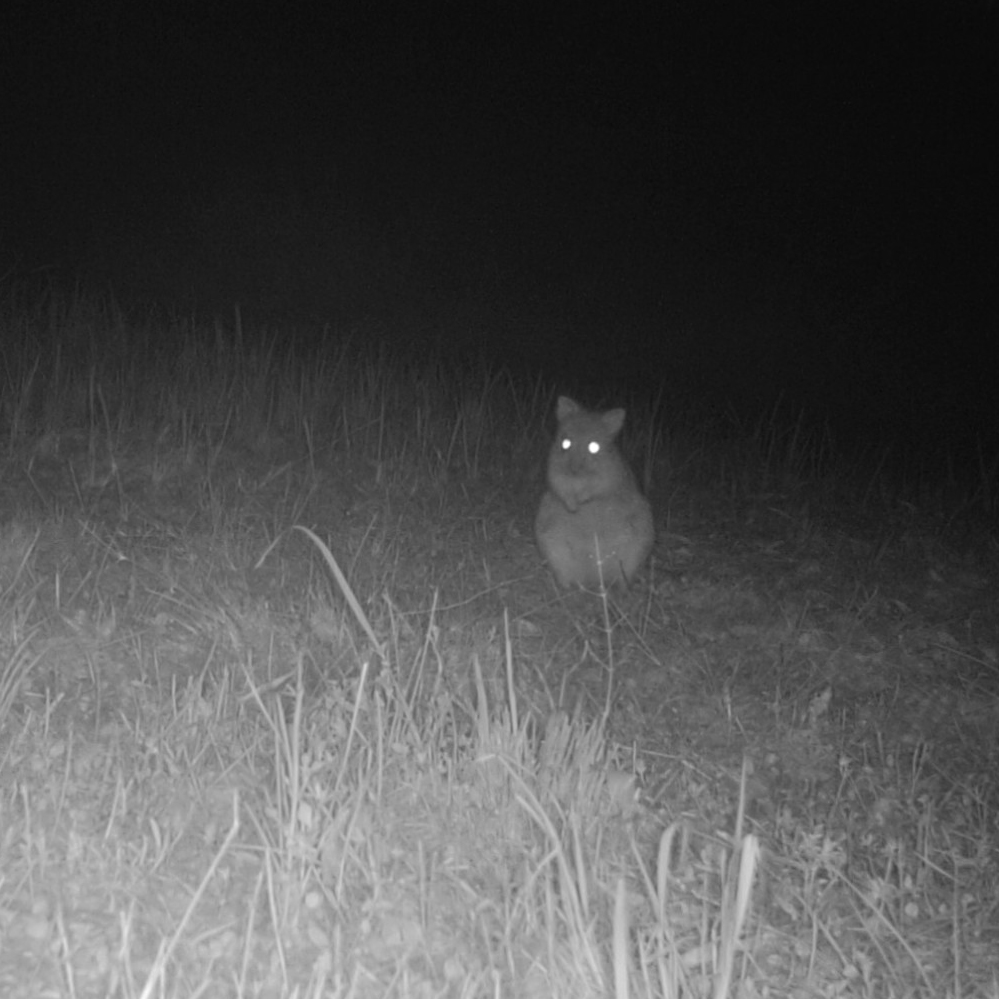Rufous Bettongs and other macropods, like these Pretty-faced Wallabies, need patches of mown and unmown grass. This probably echoes long unburnt and recently burnt habitats that would have been present in the past through Indigenous fire management.
The Rufous Bettong is an adorable, nocturnal mammal of eucalypt forest and grassy habitats. They are a very small wallaby with silvery-ginger fur, a whitish tail, very short forearms and long, thin hindlegs. The book, Wildlife of Greater Brisbane, says they are solitary however, sometimes we see them in small groups of twos or threes.
Although these little creatures are listed as Least Concern under the Queensland Nature Conservation Act, they are uncommon in SEQ, as is evidenced by the few sightings recorded in Atlas of Living Australia or WildNet.
We have sighted Rufous Bettongs at our property irregularly over the last 20 years. Usually at night, unless you happen to startle one out of its grassy nest by stumbling upon it during the day.
We have noticed that various management practices are helpful to Rufous Bettong and hope these practices will keep them on our place for generations to come.
Continuous grazing and Rufous Bettong don’t mix. They need thick, grassy ground cover and limited disturbance. Constant livestock grazing causes too much disturbance over too much ground and does not allow for the dense growth and groundcover that the Rufous Bettongs need.
They seem to like some variety in the age of growth of grassy groundcover habitat. We mow occasional sections through the Kangaroo Grass and other native grasses, which allows for fresh, green growth and wildflowers to come through. They seem to like feeding across this open ground at night.
Note the very short forearms of Rufous Bettongs. These are used to dig up roots, tubers and fungi, which form the bulk of their diet.
They particularly like large clumping grasses, so we avoid mowing these, and we leave patches of unmown grassy cover.
We have created a refuge paddock around a treated erosion headwall. Livestock rarely have access, so this small paddock provides great refugia for the Rufous Bettong.
Mowing the occasional patch of grassy groundcover ensures the ground is 100% covered, creates easier access, reduces fire risk and allows growth of native herbaceous plants. This variety seems to suit the Rufous Bettong. They feed over this patch on multiple nights, sharing it with bandicoots, brushtail possums, Pretty-faced Wallabies (also called Whiptail Wallabies) and European hares.
Article and photos by Lois and Lara Solyma
Land for Wildlife members
Croftby, Scenic Rim


